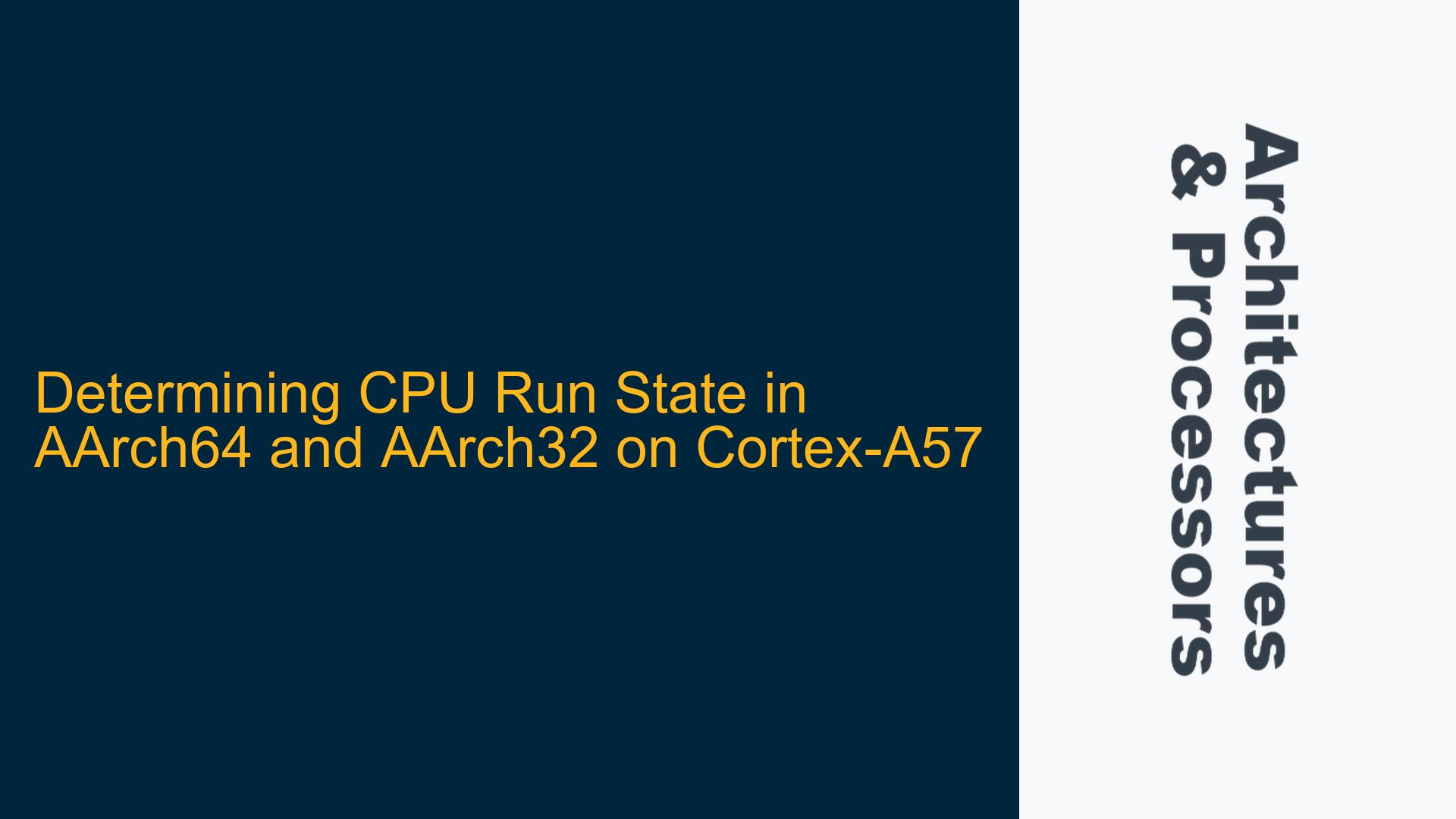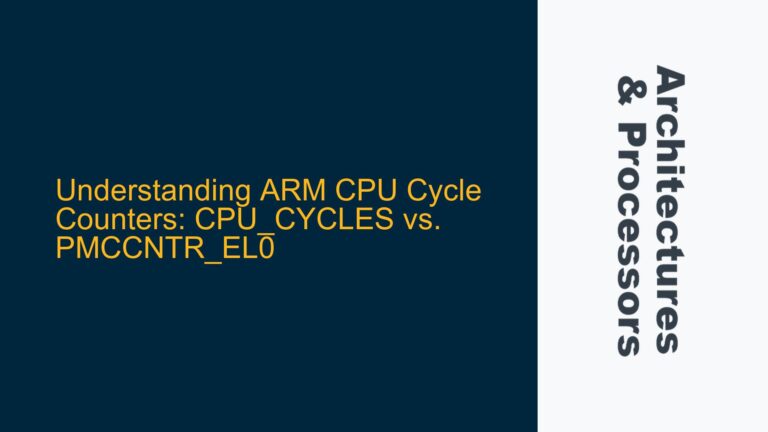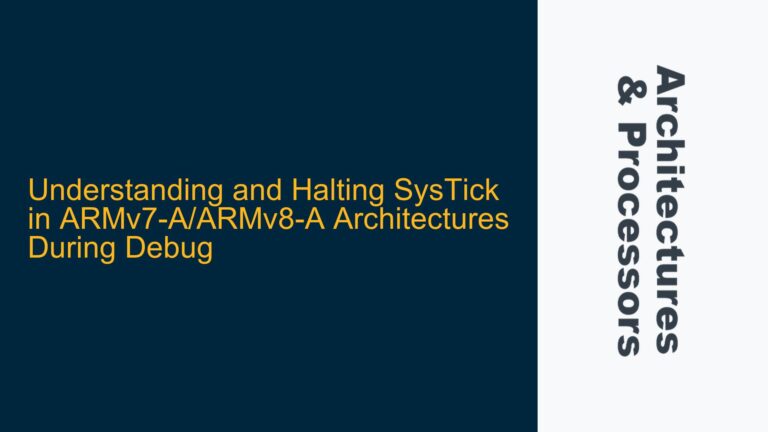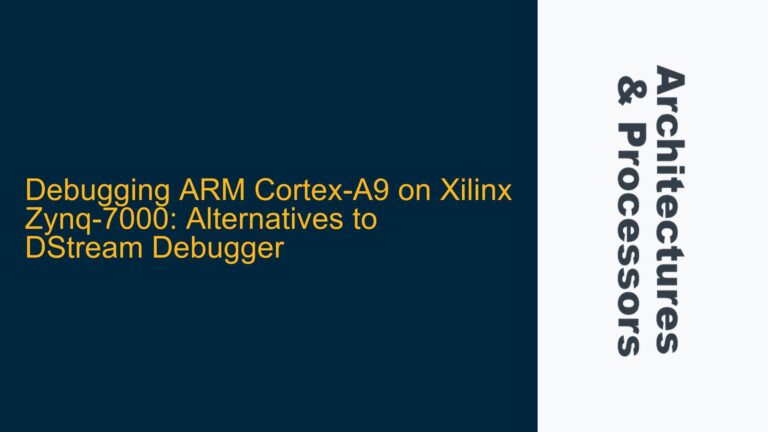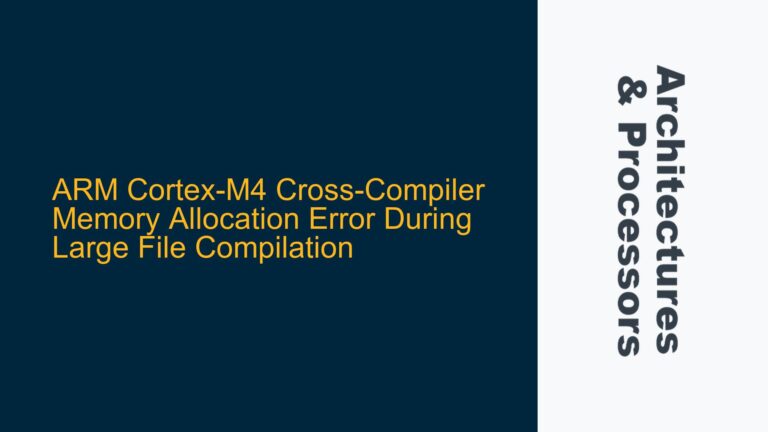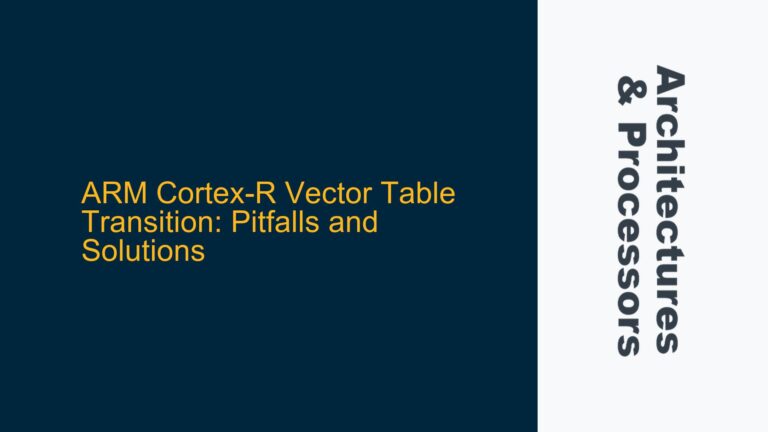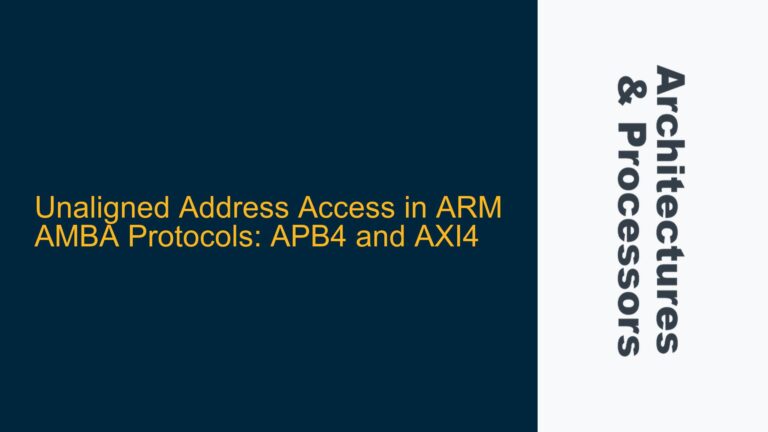Accessing PSTATE.nRW to Determine CPU Run State
The Cortex-A57 processor, part of the ARMv8-A architecture, supports both AArch64 and AArch32 execution states. The execution state determines whether the processor is operating in 64-bit or 32-bit mode. The PSTATE.nRW bit is a critical register that indicates the current execution state of the CPU. When PSTATE.nRW is 0, the processor is running in AArch64 (64-bit) mode. Conversely, when PSTATE.nRW is 1, the processor is running in AArch32 (32-bit) mode. This bit is part of the Processor State (PSTATE) register, which encapsulates the current state of the processor, including the execution mode, exception level, and other status flags.
The PSTATE.nRW bit is not directly accessible via a standard instruction in user or kernel code. However, it can be inferred or accessed indirectly through certain mechanisms. For instance, when an exception occurs, the processor state, including the PSTATE.nRW bit, is saved in the Saved Program Status Register (SPSR) corresponding to the exception level (EL) from which the exception was taken. This mechanism allows the processor to restore the state after handling the exception.
In the context of the Cortex-A57, the SPSR_ELx registers (where x corresponds to the exception level) store the PSTATE information, including the nRW bit, when an exception is taken. For example, if an exception is taken from EL3 to EL2, the PSTATE information, including the nRW bit, is saved in SPSR_EL3. However, accessing SPSR_EL3 from EL2 is not straightforward, as the SPSR_EL3 register is not directly accessible from lower exception levels. This limitation poses a challenge when trying to determine the CPU run state after an exception has been taken.
Challenges in Accessing SPSR_ELx Registers Across Exception Levels
One of the primary challenges in determining the CPU run state on the Cortex-A57 is the restricted access to the SPSR_ELx registers across different exception levels. The ARMv8-A architecture enforces strict access controls to ensure that higher exception levels (e.g., EL3) can maintain control over the system’s security and state. As a result, lower exception levels (e.g., EL2 or EL1) cannot directly access the SPSR_EL3 register, which stores the PSTATE information from the previous exception level.
This restriction is particularly problematic when trying to determine the CPU run state after an exception has been taken. For example, if the processor transitions from EL3 to EL2, the PSTATE information, including the nRW bit, is saved in SPSR_EL3. However, since EL2 cannot access SPSR_EL3, it becomes challenging to determine whether the processor was in AArch64 or AArch32 mode before the exception was taken. This limitation can complicate debugging and system state management, especially in systems that frequently switch between exception levels or execution states.
Another challenge is the lack of direct assembly instructions to read the PSTATE.nRW bit. While the ARMv8-A architecture provides instructions to access certain system registers, there is no direct instruction to read the PSTATE.nRW bit in user or kernel code. This limitation necessitates the use of indirect methods, such as reading the SPSR_ELx registers, to determine the CPU run state. However, as previously mentioned, accessing these registers across exception levels is restricted, further complicating the task.
Implementing Indirect Methods to Determine CPU Run State
Given the challenges in directly accessing the PSTATE.nRW bit and the SPSR_ELx registers across exception levels, several indirect methods can be employed to determine the CPU run state on the Cortex-A57. These methods leverage the available system registers and exception handling mechanisms to infer the execution state.
One approach is to use the Debug Saved Program Status Register (DSPSR_EL0), which is accessible in debug mode. The DSPSR_EL0 register contains a copy of the PSTATE information, including the nRW bit, when the processor is in debug state. By entering debug mode, the current execution state can be determined by reading the DSPSR_EL0.M[4] bit, which corresponds to the PSTATE.nRW bit. This method is particularly useful for debugging purposes, as it allows developers to inspect the CPU run state without modifying the system’s exception handling logic.
Another approach is to use the exception handling mechanism to capture the PSTATE information before transitioning between exception levels. For example, when an exception is taken from EL3 to EL2, the PSTATE information is saved in SPSR_EL3. By modifying the exception handler in EL3, the PSTATE information, including the nRW bit, can be captured and stored in a memory location that is accessible from EL2. This method requires modifying the exception handling code in EL3 but provides a reliable way to determine the CPU run state after an exception has been taken.
Additionally, the CurrentEL register can be used to infer the current exception level, which can provide context for the CPU run state. The CurrentEL register indicates the current exception level (EL0, EL1, EL2, or EL3) and can be accessed using the MRS instruction. While this register does not directly indicate the execution state, it can be used in conjunction with other methods to infer the CPU run state. For example, if the CurrentEL register indicates that the processor is in EL2, and the system is known to operate in AArch64 mode at EL2, it can be inferred that the processor is running in AArch64 mode.
In summary, determining the CPU run state on the Cortex-A57 requires a combination of indirect methods, including accessing the DSPSR_EL0 register in debug mode, modifying exception handlers to capture PSTATE information, and using the CurrentEL register to infer the execution state. These methods provide a way to overcome the limitations imposed by the ARMv8-A architecture and enable developers to accurately determine the CPU run state in both AArch64 and AArch32 modes.
Conclusion
Determining the CPU run state on the Cortex-A57 processor involves understanding the PSTATE.nRW bit and the challenges associated with accessing the SPSR_ELx registers across exception levels. While direct access to the PSTATE.nRW bit is not available, indirect methods such as using the DSPSR_EL0 register, modifying exception handlers, and leveraging the CurrentEL register can provide reliable ways to determine the execution state. These methods are essential for debugging and system state management, particularly in systems that frequently switch between exception levels or execution states. By employing these techniques, developers can gain valuable insights into the CPU run state and ensure the reliable operation of their embedded systems.
